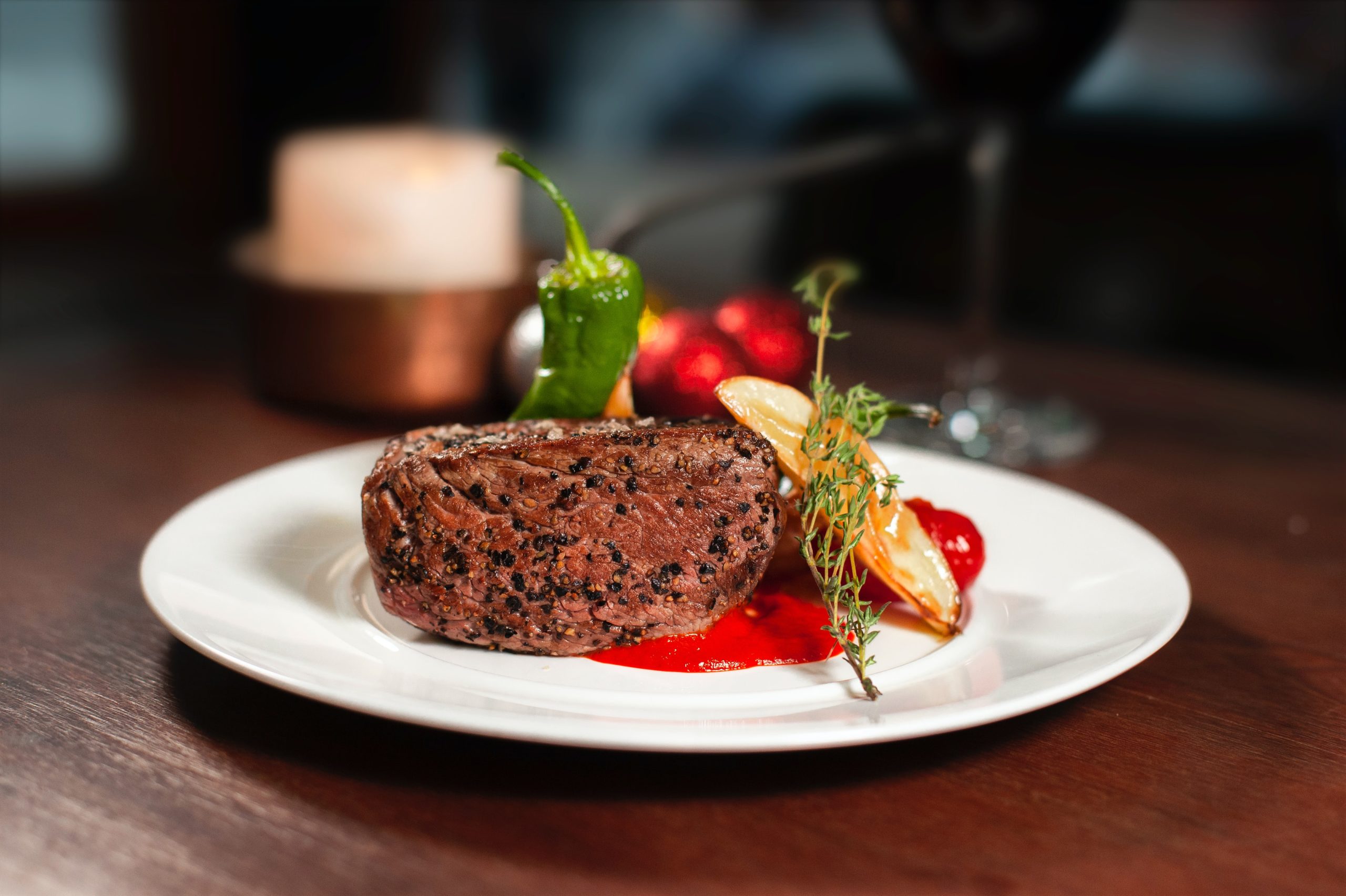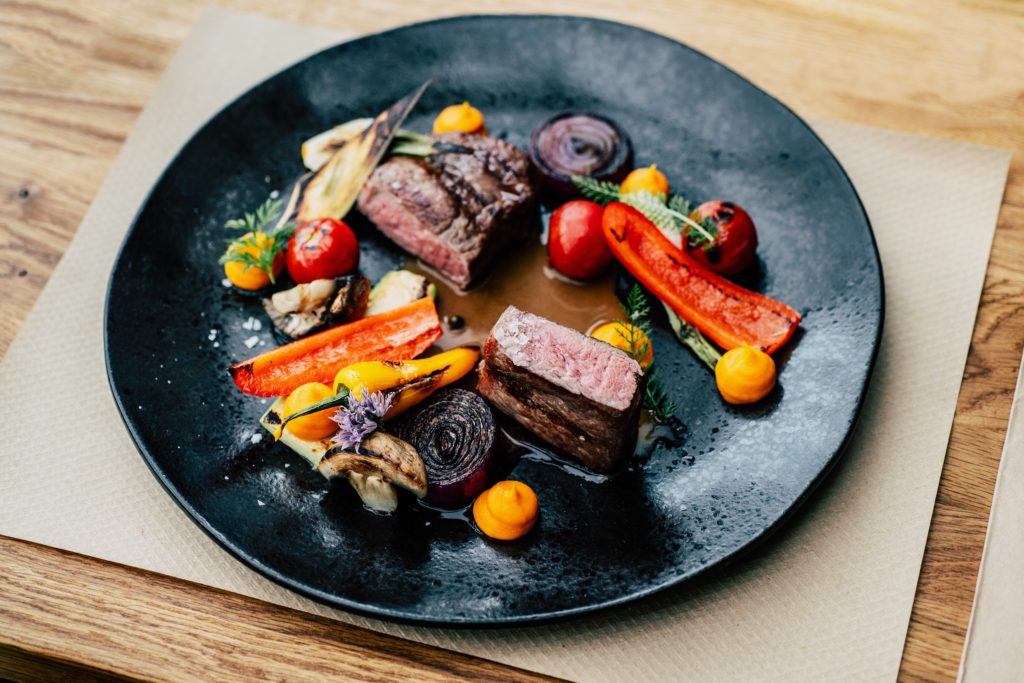The most tender, juicy, and tasty steak, fillet mignon is ideal for any special event. Here’s how to make the most excellent fillet mignon steaks you’ve ever had. There’s no need to pay a lot of money to eat at a fancy restaurant when you can easily create it at home. Whether you cut your steaks or have the butcher do it for you, you’ll be able to prepare it in a few simple steps.
The phrase “dainty fillet” or “petite fillet” literally means “dainty fillet” or “petite fillet.” “Boneless” is a culinary phrase, while “little or dainty” is a culinary term. Before it tapers off to the end, the narrower end of the tenderloin muscle was traditionally used to make fillet mignon. The majority of steaks sliced from the core of this muscle became known as “fillet mignon” throughout time.
What Is The Definition Of Filet Mignon?
Due to its coveted texture, fillet mignon is the smaller tip of tenderloin and one of the most expensive steak slices, accounting for only around 2% of the overall animal. Fun fact: When fillet mignon isn’t served alone, it can be combined with another T-bone cut. Strip steak is served on the longer side of the T-bone, while fillet mignon is served on the shorter side. If you can’t decide, go for a T-bone, and you’ll be able to have both.
What’s a Good Side Dish For Fillet Mignon?
A simple veggie side is best, in my opinion, because it allows the steak to shine. I roasted onions, bell peppers, zucchini, and mushrooms for 10 minutes in the air fryer. The tastes were a fantastic match, especially the roasted mushrooms. Filet mignon is delicious with sauteed spinach, roasted broccoli, or baked potatoes. Filet mignon is a delectable, tender cut of beef that benefits significantly from grilling. Serve with grilled veggies and twice-baked potatoes on the side.
How To Cook Filet Mignon?
Filet mignon is exceptionally delicate, although it has a milder flavor. As a result, it’s frequently served with a dipping sauce or compound butter. It can also be seasoned with a rub, marinated, smoked, or wrapped in bacon.
Grilling, broiling, roasting, and pan-frying are just a few ways to prepare fillet mignon. High heat is used to sear the meat on both sides in most cases. The steak is then finished on a reduced heat setting to achieve the required doneness while avoiding overcooking. Tenderloin cubes are also famous for hot fondue pots and shish kebabs.
Let It Rest
Thirty minutes before cooking, remove the steaks from the refrigerator, remove them from the box, and set them on the cutting board to come to room temperature.
Tie It
Why do you tie your fillet mignon? This is a question I am frequently asked. Although it’s not usual, many chefs believe in tying these steaks in the middle. The same rationale for tying the steaks is that when cooking a whole beef tenderloin roast, you want it to be uniform in size and shape while cooking. The steaks will cook more evenly if they are of a more uniform size.
Wrap each fillet mignon steak in a piece of cooking twine. Tie it firmly but not too tightly so that it cuts into the flesh. Trim the string ends if they’re too long.
Pat It dry
Preheat the oven to 425° and pat it dry so it’ll be ready to go when the steaks are seared.
Pat each steak dry with a paper towel.
Season It
Season it on all sides with salt and pepper, being sure to season it around the edges as well. Season the steaks just before placing them in the heated skillet. Because salt absorbs moisture from food, there will be too much moisture on the skin if you salt too soon, preventing a lovely sear.
Sear It
Heat some cooking oil in a cast-iron skillet (or similar oven-safe frying pan) over medium-high heat. Because butter burns, I’m not particularly eager to sear on it. You may undoubtedly smear some butter on top of the steak for added taste, but I recommend using canola or vegetable oil.
Place the steaks in the heated skillet and sear each side for approximately a minute and a half.
Finish In The Oven
Preheat the oven to 350°F and cook the skillet for 8-10 minutes before checking the temperature. The length of time it takes to cook the steaks is significantly dependent on their size. (To monitor the temperature, insert a leave-in meat thermometer through the side of the enormous steak.)
Filet mignon should be cooked to a medium-rare or medium temperature. Cook it to 130°-135° for medium-rare. Cook it to 135°-140° for medium, and 120°-125° for rare.
What’s The Finest Way To Serve Filet Mignon?
The fillet mignon is presented with garlic parmesan mashed potatoes and simple red wine mushrooms. This simple steak and potato meal recipe is ideal for a special event, holiday, or celebration. Filet mignon is a tenderloin sliced from the tenderloin’s heart, and it’s well-known for being a fork-tender beef cut. Cook the fillet mignon to medium doneness or less for the best results, but we recommend medium-rare. What should you serve with steak to make you and your guests feel as if they’re dining in a top-notch steakhouse? To make your evening feel extra special, we’ve produced a list of the best steak dinner sides.
Is Fillet Mignon A High-Quality Meat Cut?
The tenderest portion of flesh on the steer is fillet mignon (or tenderloin), an almost buttery quality. Because of its tenderness and the limited amount of meat on the animal, it is the most expensive cut at the butcher. Tenderloin is the tenderest beef cut, while fillet mignon is the best of the best. Many people only eat this steak at high-end restaurants or on special occasions, but it is simple to prepare at home and maybe served as the centerpiece of a genuinely luxury meal.
Conclusion
The price of fillet mignon is because the fillet part is so little in comparison to the size of the cow. It may be a little more expensive than other options, but it lacks the distinct flavor and texture of the meats. Most chefs will advise against purchasing a fillet mignon less than 1.5 inches thick. This is because a thicker steak keeps the center more insulated, allowing you to be more precise with the doneness. 2 to 3 inches thick is the optimal thickness for this cut.


